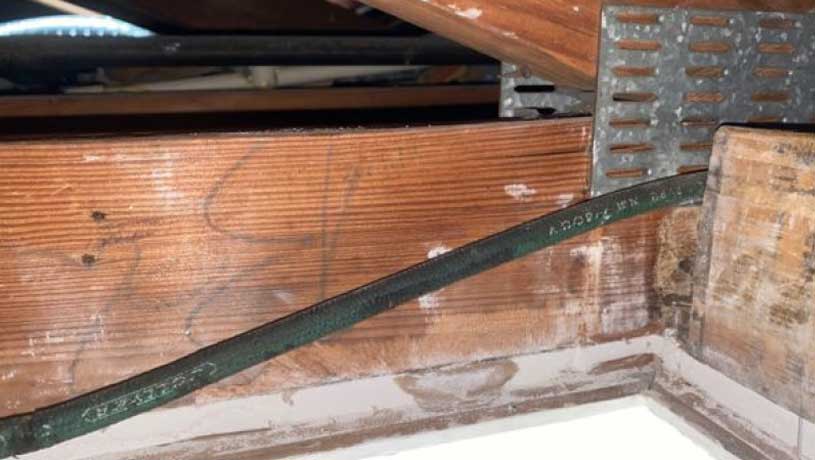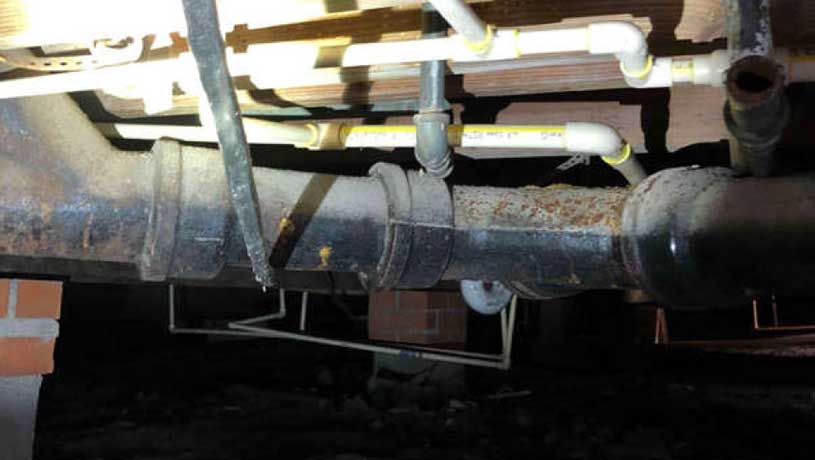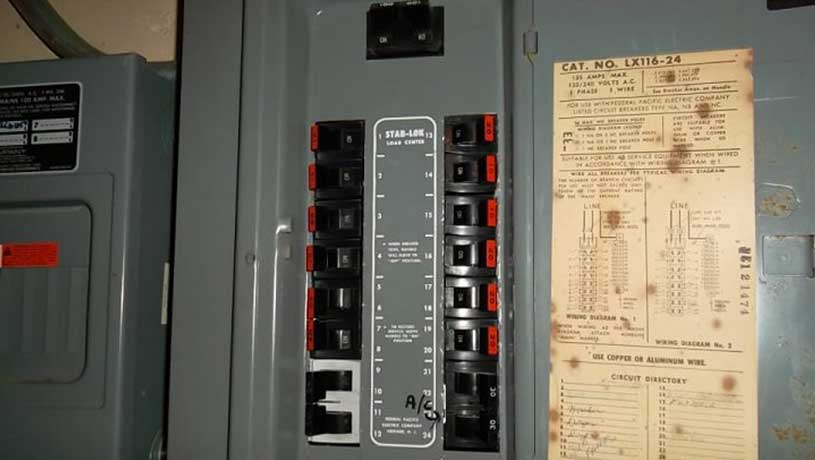Buying an Old House: 7 Things to Look For
Published on FEBRUARY 16, 2023 by ROB HASTINGS
CATEGORIES: First Time Home Buyer Tips | Buyer Resources
-
KEY POINTS: Buying an Old House
• People look to buy an house for a variety of reasons, but the primary factors are charm and character.
• Obsolete electrical wiring, plumbing, and electrical panels are not only safety hazards, but you may not be able to get homeowner's insurance.
• Termites and other wood-destroying organisms are prevalent among older homes. Learn how to protect yourself.
• A home inspection is paramount when buying an older home. Find out what other inspections you may need.
There's something about an old house that is exciting for many home buyers.
For some, it's the charm and character. For others, it's the nostalgia that reminds them of the house they grew up in. Or, for some buyers, it's just that they don't want one of the cookie-cutter houses that line so many of America's streets.
But in addition to the curb appeal, the charm and character of an old house can quickly wear off for a home buyer if some common problems aren't identified before purchasing.
Let's explore 7 things to look for when buying an old house.
1. Old Electrical Wiring
One of the most common problems when buying an older home is outdated electrical wiring. These types of wiring can include knob and tube wiring, aluminum wiring, and cloth or fabric wire insulation wiring, among others.
These types of wiring are not only electrical fire hazards in your home, but they will also likely cause issues when you attempt to get homeowner's insurance. In fact, you may not be able to get homeowner's insurance at all with these types of wiring, or the annual insurance premiums may be so high that it just doesn't make sense.

With cloth wiring, both the internal and external insulation can become deteriorated, leaving bare wire exposed and creating a potential fire hazard.
In order to resolve the issue of older wiring, the house will need to be rewired using plastic insulated copper wire. This can be a costly expense depending on the size of the home, but it can also be messy. To access electrical switches, outlets, lights, and other connections, an electrician will likely have to cut drywall on your walls and ceilings. Then, there is the additional cost of repairing the drywall and painting it to match.
For aluminum wiring, the problem is not in the wiring itself but rather in the connection points at the lights and switches; this is where they can overheat. Some insurance companies will accept aluminum wiring with Alumiconn connectors installed. These connectors make it safe to connect the existing aluminum wire to copper wire and thereby reduce the fire hazard.
Be sure to pay close attention to your home inspection report for the type of wiring. Consider asking the seller to rewire the home before closing or asking for a large concession in lieu of this repair.
2. Obsolete Plumbing
Like electrical wiring, another common issue when buying an old house is obsolete plumbing.
There are two primary plumbing systems in a house: the supply side (which delivers hot and cold water) and the drain/sewer side (which takes used water away from your home).
On the supply side, older types of plumbing include galvanized steel, polybutylene, and copper pipes.
Galvanized steel pipes have a metal layer coating that is intended to protect the pipe from corroding. But once this coating has corroded, the pipe itself corrodes next, limiting its lifespan.
Polybutylene pipes were once dubbed the pipes of the future, but it was soon discovered that oxidants in municipal water supplies were causing the pipes to become brittle.
Copper pipes are very prevalent in homes today, but they have a limited lifespan as well. Over time, hard water can cause the pipe walls to become thin, and pinhole leaks then appear. For homes built on slabs, copper pipes are often run underneath the slab, making any repair or repipe a homeowner's nightmare.
On the drain/sewer side, cast iron pipes are problematic as they rust from the inside out. This causes leaks, and replacement is soon necessary.

As you can see here, this home has been re-piped with CPVC for the supply side, but the drain/sewer side still has cast iron pipes. You can see the rust forming on the exterior of the cast iron, indicating a limited lifespan on these pipes.
If the old home you are considering has one of these types of plumbing, you may find that you cannot get homeowner's insurance, or if you can, the annual premiums will be very high.
To remediate older plumbing in a house, the house will need to be replumbed. On the supply side, today's standards include CPVC and PEX piping. On the drain/sewer side, PVC is standard. Cost is dependent on the number of fixtures in the home (toilets, sinks, showers, tubs, hose bibs, laundry connections, etc.) and if the home's plumbing is accessible through a sizable crawlspace or attic. If not, you can expect additional cost to jackhammer the slab to access the plumbing.
Similar to electrical wiring, a replumb can be very expensive, but there is also the cost of repairing any drywall, resetting any toilets, and/or re-tiling any showers. Be sure to factor these costs into your negotiation with the seller before closing.
3. Signs of Termites & Wood-Destroying Pests
Part of the appeal of old homes is just that; they are old! But an old home often comes with issues of structural integrity. Many older homes are plagued by termite damage and other wood-destroying organism damage which compromises this structural integrity.
Termites and other wood-destroying pests can eat at the home's wood structural components. Today's new construction homes have often been built with treated timber, which reduces the risk of wood-destroying organism activity. But this type of building protection wasn't available when many older homes were built, so these homes are more susceptible to this type of damage. Moreover, it's not unreasonable to think that many wood-destroying organisms were already in the wood when the wood was brought to the home's construction site.
Be sure to ask if there is a termite bond on the older home you are buying. This will indicate how long the home has been protected from wood-destroying pests and also give you confidence that this potential issue has been monitored by the current homeowner and his or her hired pest professionals.
Also, it is important to order a Wood-Destroying Organism (WDO) Inspection from your home inspector. This inspection will identify any signs of termites or other wood-destroying organisms such as powder post beetles and wood borers.
In many cases, there may be signs of wood-destroying organisms, but they may not be active. If the structural integrity is not compromised despite these signs, you may be comfortable with moving forward and accepting the risk. For peace of mind and added protection, consider an application of a product such as Tim-Bor Professional Insecticide or Bora-Care which are utilized for controlling subterranean termites, drywood termites, wood decay fungi, carpenter ants, and wood-boring beetles.
Consult a professional for expert advice.
4. Roof
Older homes are prone to several types of roof issues.
Depending on where you are considering purchasing a home, the lifespan of the roof can vary greatly. In Northeast Florida, the lifespan of an architectural shingle roof is approximately 17-22 years. For a three-tab shingle roof, the lifespan is approximately 13-15 years. To check the age of the roof of the home you are considering purchasing, look at the home's permit history.
Key indicators of an older roof are curls on the edge of the shingles, missing spots of roof granules, cracked shingles, and "glistening" on the shingle edges in the sun.
A home inspection will identify several issues pertaining to your roof. One issue that home inspectors often find on older homes is two or three layers of shingles. This is when a homeowner, instead of removing the existing shingles, just added another layer of shingles on top. This can lead to issues as the underlayment of the roof is not replaced.
Older homes also commonly have issues with the roof sheathing. This is the wood that is nailed to the structure of your home; the underlayment, along with the shingles, are attached on top of the roof sheathing. When shingles become compromised as they get older, the sheathing can become wet, leading to rot. Your home inspector should be able to identify rotten sheathing when inspecting the attic or finding soft spots when walking the roof.
The cost to replace a roof is significant. Like electrical and plumbing, the age and condition of your roof can also affect your homeowner's insurance premiums.
5. Fire-Prone Electrical Panels
As mentioned previously, one of the most common problems when buying a older home is outdated electrical wiring, but alongside this problem is often a fire-prone electrical panel. After all, if the current owner hasn't rewired the home, he or she probably hasn't updated the electrical panel either.
For about 30 years (from 1950 to 1980), Federal Pacific was the largest manufacturers of electrical panels in the U.S. As a result, Federal Pacific electrical panels are installed in millions of homes. These electrical panels are unsafe as the circuit breakers fail to trip during a short circuit or overload of a circuit. This failure results in a fire.

Federal Pacific Stab Lok Electrical Panels have caused several fires in homes throughout the country. As a result, homeowner's insurance companies won't insure homes with these panels, and they must be replaced before a new policy is written.
Other electrical panels that are problematic include Challenger (some models) and Zinsco.
Although the scope of work involved in replacing an electrical panel isn't as big as some of the aforementioned issues, the cost is still substantial (usually between $1,200 and $2,400 depending on the home size and number of circuits).
Additionally, this is another case where you may not be able to get homeowner's insurance with one of these types of panels installed. As before, consider asking the seller to replace the electrical panel before closing or asking for an appropriate concession in lieu of this repair.
6. Foundation Issues
The charm in an old home is more than just a reflection of the past. Many home buyers like old homes because everything isn't perfect. Examples include uneven hardwood floors, cracked steps, or doors that don't close perfectly.
But some of these small and charming imperfections that give the home character can be signs of bigger and expensive problems, particularly with the foundation.
Just due to age, a home will settle as the soil it sits on is compressed. This settling can cause stress on the foundation of the home, leading to those "charming" characteristics such as uneven floors or doors that don't close perfectly because they are out of square.
Other issues and signs that your home has potential foundation issues are hairline cracks in your interior walls, stair step cracks in exterior brick, and spalling of exterior brick.
It is important to consult a foundation professional if your home inspector identifies potential foundation issues.
7. Water Heater
Water heaters are big and bulky, and they are often crammed into tiny spaces in older homes that maybe weren't meant to house water heaters. When this is done, and since it's inconvenient to switch it out, it's not uncommon that water heaters are past their useful life in older homes.
But while the cost to replace a water heater isn't overly expensive, the problems it can cause are far more frustrating.
Old water heaters will rust out, causing the potential for flooding in a home. Furthermore, some old water heaters don't have relief valves, creating the possibility for an explosion. Even if a water heater does have a relief valve, those valves can become blocked due to sediment or other growth, and the pressure will increase inside the water heater. Finally, old water heaters can experience sediment building up, and this creates an environment for bacteria to form. Not exactly what you want for a hot shower in your new home...
Similar to other issues, your hot water may affect your ability to get insurance. Be sure to check the age of the water heater. Your home inspector will likely check it as well.
Bottom Line - Get a Home Inspection
While having a understanding of what to look for when buying an older home is helpful, the importance of hiring a professional home inspector to inspect the home cannot be overstated.
In addition to the regular home inspection, ask your home inspector to provide a 4-Point Inspection. This inspection looks at a home's four major systems: electrical, plumbing, roof, and HVAC. If you are purchasing an older home, you will likely need to provide this 4-Point Inspection to your homeowner's insurance provider. After reviewing it, the insurer may require items to be replaced as described above before closing or within a certain number of days after closing.
An older home certainly has its charm and character. But it's important to know what to look for in an older home so that charm and character doesn't hurt your wallet.
Related Articles:
Decision Time: Buy an Existing Home or Build a New One?
5 First Time Home Buyer Mistakes to Avoid
ABOUT THE AUTHOR:

Rob Hastings is a top-producing real estate agent in Jacksonville, Florida and helps buyers, sellers, and investors of homes and property throughout all of Northeast Florida. He works with his wife Nancy as a husband-and wife-team with Keller Williams Realty Atlantic Partners. When not helping his clients navigate the real estate process, Rob enjoys working on old Corvettes and playing music (guitar and piano). A U.S. Naval Academy graduate and former Naval Officer, he also loves boating and simply spending time on the water.
